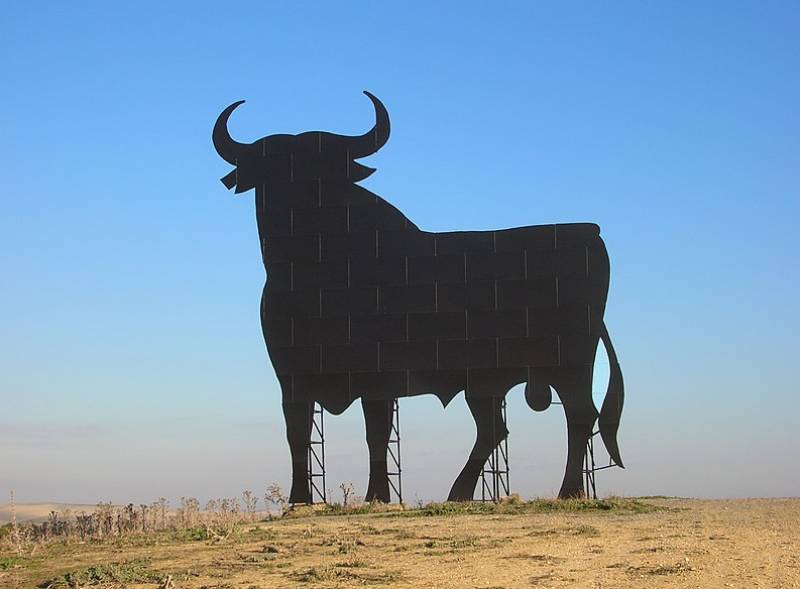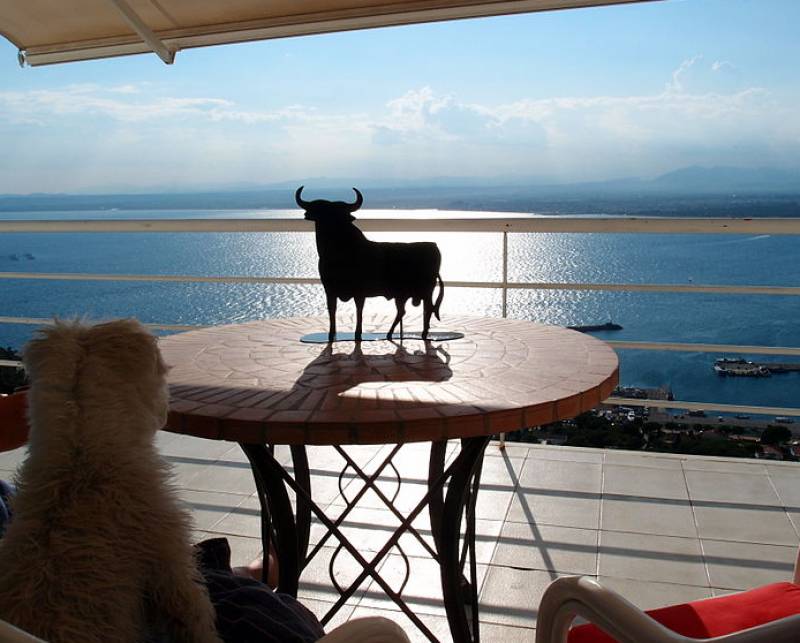What is that Spanish black bull road sign? The little-known story of the Osborne bulls
The enormous bull silhouettes can be found along roadsides all across Spain

Anyone who has driven along a motorway in Spain for some distance will likely have spotted an Osborne bull at some point: a towering black silhouette, most measuring 14 metres high and dominating the surrounding countryside. The image has now become synonymous with Spain and adorns all kinds of souvenirs, from T-shirts to mugs.
But where did the tradition start, and how did the bull become such an important part of Spanish heritage?
Well, from very humble beginnings, as it turns out. The image was actually created by Cádiz artist Manolo Prieto who designed the bull as part of an advertising campaign for the Osborne Group’s ‘Veteran’ brandy in 1956. Legend has it that the renowned painter was disappointed with the end result, but the iconic figure, originally made of wood, soon sprung up all over the country with the sherry company’s name plastered across it.
 The bull first came under threat in the 1960s, when the government insisted that none of the increasingly popular silhouettes could be within 150 metres of the road. It’s around this time that they were changed to metal to better withstand the weather, and gained their colossal size.
The bull first came under threat in the 1960s, when the government insisted that none of the increasingly popular silhouettes could be within 150 metres of the road. It’s around this time that they were changed to metal to better withstand the weather, and gained their colossal size.Further challenges emerged in 1994 when the Spanish Traffic Authorities demanded its removal in a bid to cut down on roadside distractions. Public outcry ensued, to the extent that the Andalusian government actually declared it an item of Heritage.
So, how many Osbourne bulls are left in Spain? Sadly, only 91 and just two still display the word ‘Osborne’ – one at Jerez de la Frontera airport and the other near Puerto de Santa María, both in the province of Cadiz.
The DGT isn’t the only threat to this famous icon though. During the summer of 2022, three unnamed artists calling themselves dissidents set about painting the Osborne bulls. They began with the sign located on the outskirts of Xinzo de Limia in Ourense, painting it blue in the dead of night so that it perfectly blends in with the sky during the day.
“A car stopped and we hid. It has been like doing graffiti but without leaving your name,” one of the artists explained, considering defacing the bulls is a punishable offence.

In fact, back in 2005, Javier Figueredo was placed under house arrest for two days after he painted white spots on one specimen, turning the bull into a cow.
The Osborne Group, which actually owns all of these bulls, tends to stay away from cases of vandalism, since they’re considered acts of artistic expression by many.
Understandably, most people are extremely put out by the altered road signs as they’ve become a treasured part of the landscape for most. And despite attempts to alter it over the years, the Osborne bull has endured against all odds. But then again, he does have a pretty big pair of cojones after all.
Images: Wikimedia Commons
Loading
Sign up for the Spanish News Today Editors Roundup Weekly Bulletin and get an email with all the week’s news straight to your inbox
Special offer: Subscribe now for 25% off (36.95 euros for 48 Bulletins)
OR
you can sign up to our FREE weekly roundup!
Read some of our recent bulletins:
Discount Special Offer subscription:
36.95€ for 48 Editor’s Weekly News Roundup bulletins!
Please CLICK THE BUTTON to subscribe.
(List price 3 months 12 Bulletins)
Read more stories from around Spain:
Contact Spanish News Today: Editorial 966 260 896 /
Office 968 018 268

























